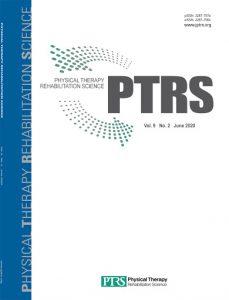Publications

Immediate Effects of Muscle Tension and Pain to Myofascial Release and Duoball Assisted Self-Relaxation Techniques in Patients Experiencing Chronic Cervical Pain
Authors: Kyeong Bae, Changho Song
Affiliations:
Department of Physical Therapy, College of Health and Welfare, Sahmyook University, Seoul, Republic of Korea
Journal: Physical Therapy Rehabilitation Science - March 2024, Volume 13, Issue 1, Pages 124-133 (DOI: 10.14474/ptrs.2024.13.1.124)
-
Field & Applications:
- Medical
- Treatment evaluation
- Physiotherapy
- Musculoskeletal disorder
Objective: This study aims to investigate the immediate effects of myofascial release and Duoball assisted self-relaxation (DASR) techniques on pain and muscle tension in patients experiencing chronic cervical pain.
Design: A randomized controlled trial.
Methods: This study is a randomized controlled experimental study. Eighteen patients with chronic neck pain who met the selection criteria were randomly assigned to myofascial release group and myofascial release group using Duoball.
Results: The frequency results for assessment muscle tension showed a decrease of about 10% in the suboccipital muscle, SCM, Pect m, UT, and LS in both the MFR and DASR groups, and the stiffness results showed a decrease in all muscles except the upper trapezius in the MFR group and the DASR group. All were found to decrease by about 10% in the suboccipital muscle, SCM, Pect m, UT, and LS, and the decrement results showed an increase of about 15% in the suboccipital muscle, SCM, Pect m, UT, and LS in both the MFR and DASR groups(p<0.05).
Conclusions: In patients experiencing chronic neck pain, application of MFR and Duoball assisted self relaxion was shown to be effective on pain and muscle tension. MFR is a non-pharmacological intervention method with few potential side effects and is considered a universal and easily applicable treatment method.
Keywords: myofascial release, Duoball, chronic neck pain
In patients experiencing chronic neck pain, applying MFR and Duoball assisted self relaxion was shown to be effective on pain and muscle tension. MFR is a non-pharmacological intervention method with few potential side effects and is considered a universal and easily applicable treatment method. MFR and DASR is similar to the principle of MFR, but the difference in passive and active aspects suggests that the effect may be slightly different. Accordingly, we would like to suggest the importance of future research on the effectiveness of MFR combined with various intervention methods.


